
In Italian cinema, giallo is a genre of murder mystery fiction that often contains slasher, thriller, psychological horror, sexploitation, and, less frequently, supernatural horror elements.

Silent Night, Deadly Night is a 1984 American slasher film directed by Charles E. Sellier, Jr., and starring Robert Brian Wilson, Lilyan Chauvin, Gilmer McCormick, Toni Nero, Linnea Quigley, Britt Leach, and Leo Geter. The story concerns a young man named Billy, who suffers from post-traumatic stress over witnessing his parents' murder on Christmas Eve by a man disguised as Santa Claus and his subsequent upbringing in an abusive Catholic orphanage. In adulthood, the Christmas holiday leads him into a psychological breakdown, and he emerges as a spree killer donning a Santa suit.

Halloween 4: The Return of Michael Myers is a 1988 American slasher film directed by Dwight H. Little, written by Alan B. McElroy, and starring Donald Pleasence, Ellie Cornell, and Danielle Harris in her film debut. It is the fourth entry in the Halloween franchise and marks the return of Michael Myers, as the primary antagonist, after his absence in Halloween III: Season of the Witch (1982), a standalone film.
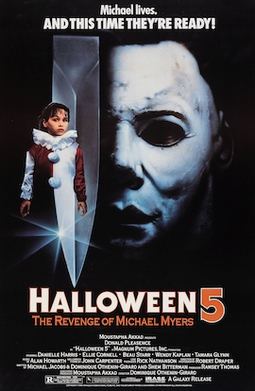
Halloween 5: The Revenge of Michael Myers is a 1989 American slasher film co-written and directed by Dominique Othenin-Girard, and starring Donald Pleasence and Danielle Harris. The fifth installment in the Halloween series, it follows serial killer Michael Myers who again returns to the town of Haddonfield to murder his traumatized niece, Jamie Lloyd, with whom he now shares a telepathic connection.

Blood and Black Lace is a 1964 giallo film directed by Mario Bava and starring Eva Bartok and Cameron Mitchell. The story concerns the brutal murders of a Roman fashion house's models, committed by a masked killer in a desperate attempt to obtain a scandal-revealing diary.
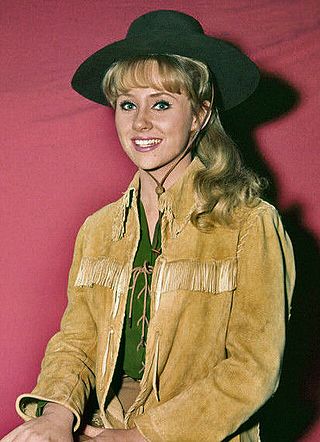
Melody Patricia Patterson was an American actress known for her role as Wrangler Jane in the 1960s television series F Troop and for her role as Ellie in the horror film Blood and Lace (1971).
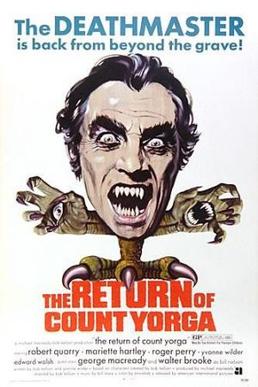
The Return of Count Yorga is a 1971 American vampire horror film directed by Bob Kelljan and starring Robert Quarry, Roger Perry, Yvonne Wilder, George Macready, Rudy De Luca, Edward Walsh, and Craig T. Nelson in his feature film debut. It is the sequel to the 1970 film Count Yorga, Vampire.
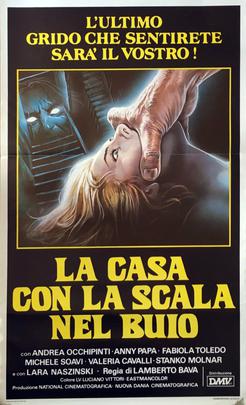
A Blade in the Dark is a 1983 Italian giallo film directed by Lamberto Bava. Originally planned for television, the film was made as a nearly two hour piece split into four parts each of which would end with a murder scene. After the film was found to be too gruesome for Italian television censors, it was re-edited into a feature film.

Whoever Slew Auntie Roo? is a 1971 horror-thriller film directed by Curtis Harrington and starring Shelley Winters, Mark Lester, and Sir Ralph Richardson. Based partly on the fairy tale "Hansel and Gretel", the film focuses on a demented American widow living in her husband's English manor who becomes obsessed with a young orphan girl who resembles her dead daughter.
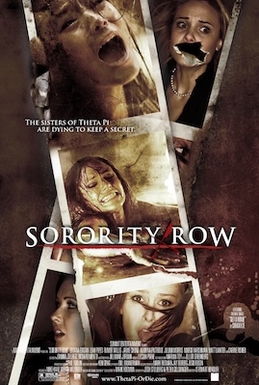
Sorority Row is a 2009 American slasher film directed by Stewart Hendler and written by Josh Stolberg and Pete Goldfinger. A remake of the 1982 film The House on Sorority Row, the film stars Briana Evigan, Leah Pipes, Rumer Willis, Jamie Chung, Margo Harshman, Audrina Patridge, and Carrie Fisher. It follows a group of sorority sisters who cover up the accidental death of a fellow sister after a prank goes horribly wrong. Eight months later, a masked killer begins stalking and murdering the girls on the night of their graduation.

The Case of the Scorpion's Tail is a 1971 Italian giallo film directed by Sergio Martino, produced by Luciano Martino and co-written by Ernesto Gastaldi and Eduardo Maria Brochero. It starred George Hilton, Anita Strindberg, Ida Galli and Janine Reynaud, and the music soundtrack was by Bruno Nicolai.
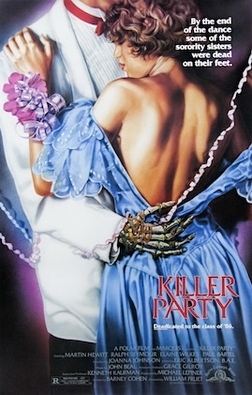
Killer Party is a 1986 Canadian supernatural slasher film directed by William Fruet, and starring Martin Hewitt, Ralph Seymour, Elaine Wilkes, Joanna Johnson, Sherry Willis-Burch, and Paul Bartel. It follows a trio of female sorority pledges who unleash a demonic force after participating in an initiation ritual in an abandoned house on their university's campus.

Daddy Long Legs (1931) is an American pre-Code film directed by Alfred Santell and starring Janet Gaynor and Warner Baxter. The story involves an orphan who is taken under the wing of a wealthy benefactor.
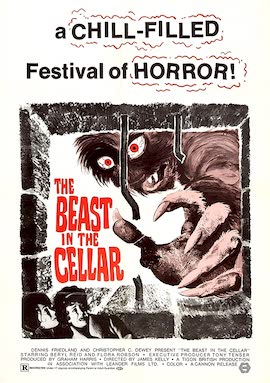
The Beast in the Cellar is a 1971 British horror film written and directed by James Kelley. The film was produced by Leander Films and Tigon British Film Productions, and starred Beryl Reid.

Delirium is a 1987 Italian giallo film directed by Lamberto Bava and starring Serena Grandi, David Brandon, George Eastman and Daria Nicolodi. The film is about Gioia, a centerfold model for the adult Pussycat magazine. She is harassed by a killer who sends her photos of her co-workers with her own erotic photography in the background.

Cross Current, , is a 1971 Italian-Spanish giallo film directed by Tonino Ricci, starring Ivan Rassimov and Rosanna Yanni. The film's original working title was Il buio nel cervello

Mansion of the Doomed is a 1976 American exploitation horror film directed by Michael Pataki and starring Richard Basehart and Gloria Grahame.
Gore Orphanage is a 2015 independent horror film and the directorial debut of Emily Lapisardi, who co-wrote the film with Cody Knotts. The film premiered at the Sandusky State Theater on July 11, 2015 and was released as a streaming video through Amazon on July 21. The film was inspired by the urban legend by the same name in Northern Ohio.

All Through the House is a 2015 American holiday slasher film written and directed by Todd Nunes and produced by The Readmond Company. It stars Ashley Mary Nunes, Jessica Cameron, and Jennifer Wenger, and follows a masked killer dressed in a Santa Claus costume who terrorizes a neighborhood during the Christmas holiday. The film was shot in Los Angeles, San Francisco, and Lake Arrowhead, California over a period of 21 days.
Rachel Carruthers is a fictional character in the Halloween series of slasher films, and is the final girl of the film Halloween 4: The Return of Michael Myers (1988). Rachel is the foster sister of Jamie Lloyd, who is the niece of serial killer Michael Myers. In Halloween 5: The Revenge of Michael Myers (1989), she becomes Myers' 35th victim. Rachel was portrayed by actress Ellie Cornell.


















